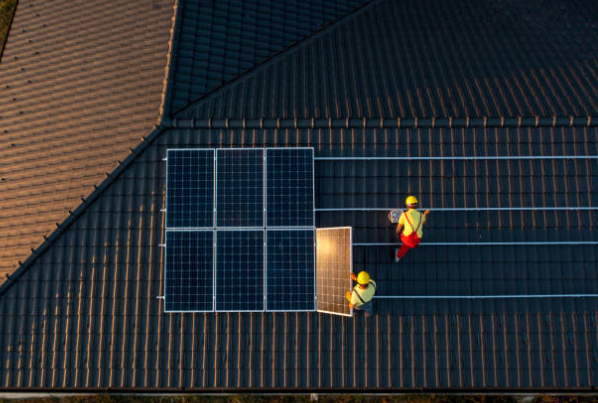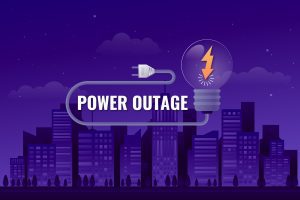7 factors that affect the performance of your solar system
Key takeaways
- The efficiency of your solar system can be affected by environmental or weather conditions, your equipment and the setup of your solar system, and the efficiency of your inverters.
- There are some small changes you can make in many of these areas to increase the efficiency and performance of your solar panels.
- Choosing a microinverter system over a string inverter system can have one of the biggest impacts on solar system efficiency.
Installing a solar system can be a big investment, so most homeowners are always looking for ways to maximize their ROI by making their installation as efficient as possible.
That’s why it’s so important to understand the factors that can affect the efficiency and performance of your solar panels. Some of the factors are outside of your control, but there are plenty of small changes that you can make to ensure you generate as much energy as possible, as efficiently as possible.
Environmental factors
You can’t control the weather – but there are some small changes you can make to ensure that your solar panels adapt well to environmental conditions.
Irradiance
NASA defines irradiance as the amount of light energy hitting a surface – for our purposes, that means the amount of sunlight that hits your solar panels at any given time.
The relationship between irradiance and solar power performance is pretty simple: If your solar panels are getting less sunlight, they’ll produce less power. On the other hand, the higher the irradiance, the more power your solar panels will generate.
Some of this is outside of your control – you can’t affect whether or not the sun shines – but you can optimize the performance of your panels by placing them so that they get as much sunlight for as long as possible every day. We’ll talk more about how to do this below.
Temperature
The higher the temperature, the lower the output of your solar panels.
This might seem counterintuitive at first, because light and heat are so closely tied together in our minds. But there’s a solid scientific reason behind it. When a solar panel heats up, the voltage of the semiconducting material in the panel drops, which reduces the panel’s output.
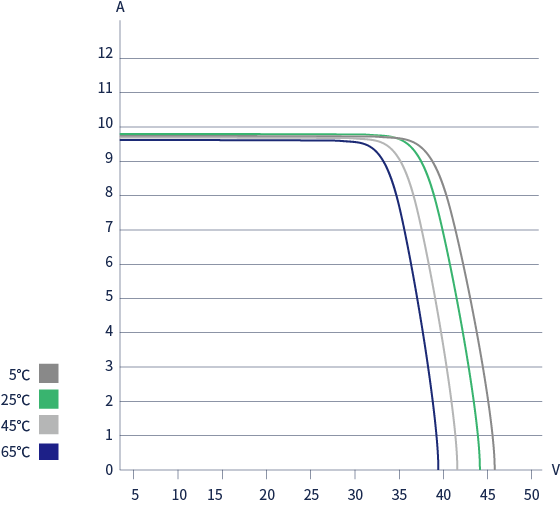
As a result, high temperatures can reduce the output efficiency of a solar panel by between 10% and a whopping 25%.
Solar panels are generally tested at about 25°C and are rated to perform at peak efficiency between 15°C and 35°C.
You can find out exactly how much your solar panels are affected by temperature by checking the temperature coefficient on the manufacturer’s data sheet. The temperature coefficient shows how much power your panels will lose for every degree the temperature climbs over 25°C. For example, if the temperature coefficient of a panel is about -0.3%, the efficiency of the solar panel will decrease by 0.3% for every degree the temperature climbs above 25°C.
To avoid overheating your solar panels, you might want to try the following:
- If your panels are on your roof, leave at least a between your panels and the roof, so that air can easily circulate underneath the panels and keep it cool.
- If you’re using a traditional string inverter on your installation, move it into a shaded area. Alternatively, you can use microinverters; in addition to improving the overall efficiency and reliability of your solar system, these are installed directly underneath the panels, meaning they’re always in shade.
- Install white- or light-colored roofing that reflects sunlight around your panels.
- Look into ground-mounted solar panels if you live in a hot climate.
Equipment and setup factors
The way you set up and maintain your solar system can also have a huge impact on its efficiency and performance.
Solar panel degradation
Like all technology, solar panels gradually degrade over time. The older they are, the less electricity they will produce. But don’t worry – solar panels usually take a long time to degrade, and most manufacturers guarantee at least 90% performance for the first 10 years, then 80% for the remaining 15-20 years of the panel’s life. Overall, you can expect your panels to degrade at a rate of 8-14% during the first 25 years after they’re installed.
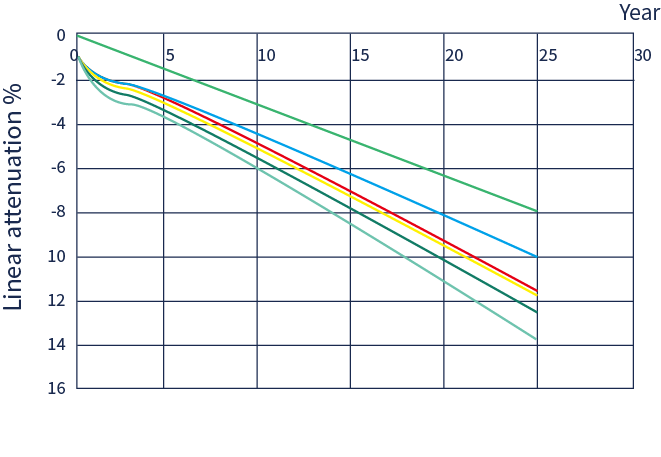
The biggest contributor to degradation is the wear and tear that comes from solar panels being exposed to the elements. Wind, rain, and snow wear down the panels and create tiny cracks in the solar cells, corrode the panels’ frames, or harden the crystalline silicone, all of which can disrupt the power generation process.
Some of this is inevitable – you’ll rarely be able to completely protect your panels from the elements – but there are some things you can do to slow down solar panel degradation. This includes:
- Buying higher-quality solar panels
- Making sure solar panels are installed correctly, without being scratched or damaged in the process
- Installing panels at the right angle so that they can “self-clean” efficiently when it rains or snows
- Keeping up proper maintenance to remove any build-up of dirt or debris that might block the sunlight
Solar panel orientation and tilt
It’s simple: If you want your solar panels to generate as much energy as possible, you need to make sure they’re positioned to catch as much sunlight as possible across the span of a day.
Solar panels are most efficient when the sun’s rays are perpendicular to the surface of the panels – but, as the sun moves across the sky in the course of a day and through each season, the sun can’t always be in the perfect position.
So the key is calculating the azimuth angle – the compass direction from which the sun is shining – for your location, and placing your panels at a tilt that keeps them perpendicular to the sun for as long as possible. That means:
- If you’re north of the equator, your panels should be facing south. If you’re south of the equator, they should be facing
- The angle at which your panels are tilted depends on the latitude of your home, as this will determine the azimuth angle for your location. In the US, the best angle is generally somewhere between 30 and 45 degrees.
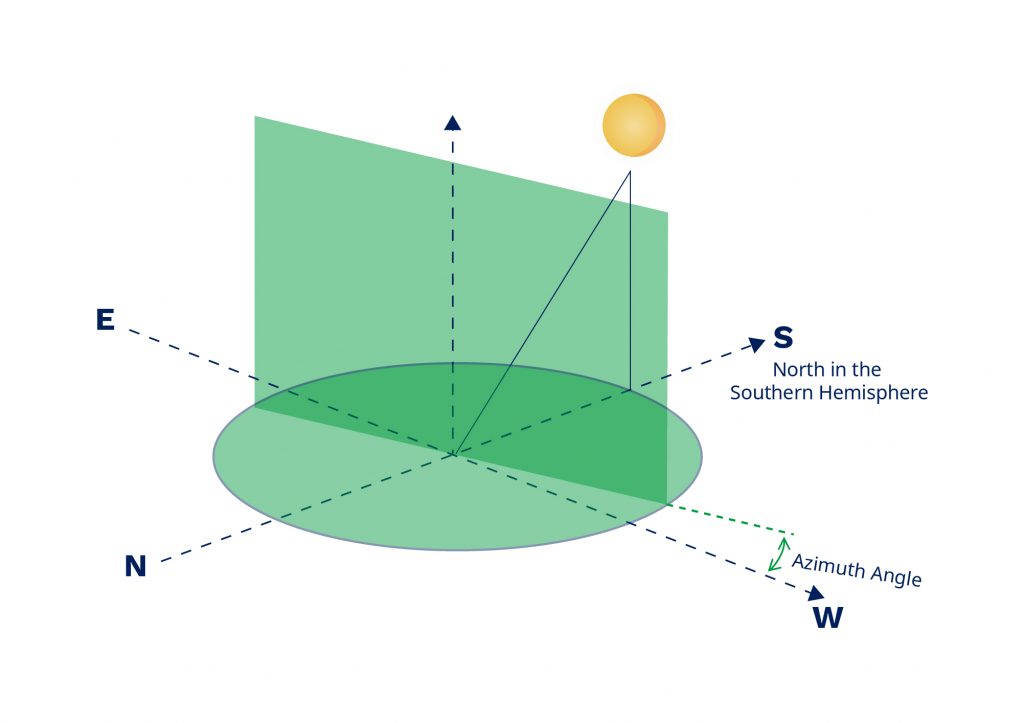
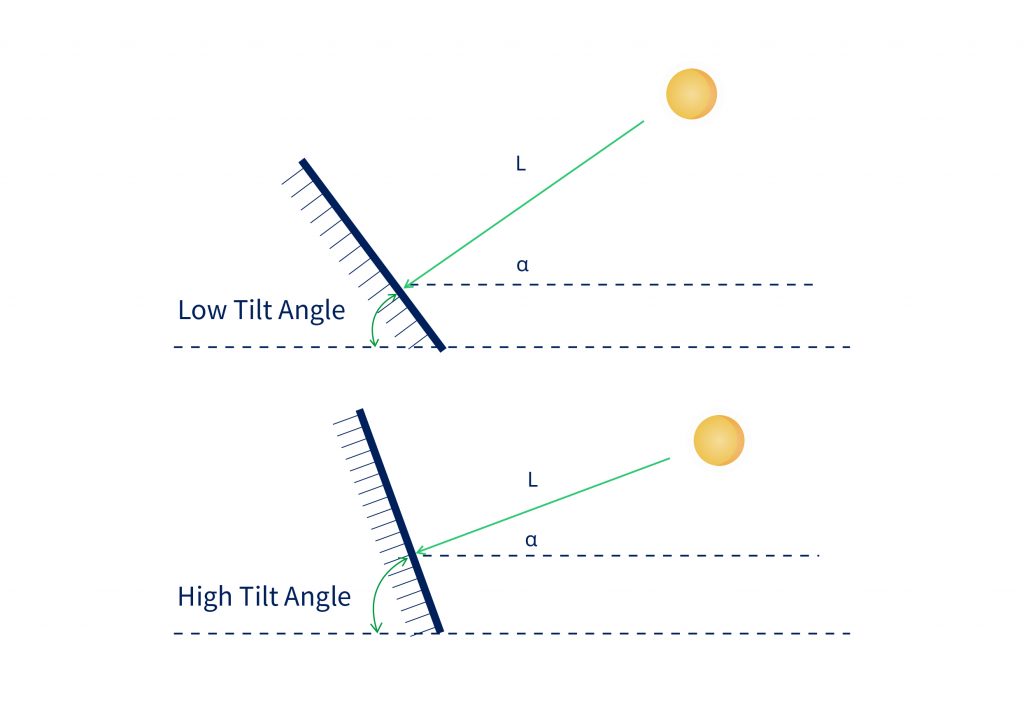
Of course, the position of the sun changes throughout the day, so a static panel won’t always be at the perfect angle to catch the sun. That’s why some homeowners use that adjust the position of your solar panel over the course of the day, so that the angle is optimized for as long as possible. These can be particularly valuable in areas that get less sunlight, or experience capricious weather.
Shading and soiling
If any part of a solar panel is blocked from the sun – either because the solar panel is in shade, or because dirt and dust is obscuring the surface of the panel – then the output of that panel will plummet.
But the effects aren’t limited to just one panel. If you’re using a traditional string inverter in your system, when the output of one panel drops, the output of every panel in your system drops to the same level.
If you want to maximize efficiency and performance, invest in a microinverter system instead. When you use microinverters, each panel in your system functions and converts power individually. So if one panel falls into shade or gets dirty, the rest of your panels will keep working just as efficiently as before.
Inverter efficiency
It’s not just your solar panels that can affect the performance of your solar installation – the inverters you use to convert DC to AC power can make or break the efficiency of your system.
Conversion efficiency
When your inverters convert direct current to alternating current, a small amount of energy is always lost. This is because inverters need some power to actually do the task of converting the current.
There isn’t much energy lost here – the best inverters for household use tend to be between 96-98% efficient. But there is some variation between different inverter brands, so keep an eye on the conversion efficiency of your inverters when you’re building your solar system.
MPPT efficiency
MPPT stands for maximum power point tracking. The MPPT controller sits inside an inverter and tracks fluctuations in the maximum power point of each solar panel, ensuring that the inverter is always converting as much energy as possible at any given moment. You can read more about MPPT and why it’s so important here.
This is another reason why multiple microinverters are often better for the performance of your solar system than string inverters. In a standard string system, there is only one MPPT controller converting power from multiple solar panels in series – so, as we discussed above, if the maximum power point of one panel drops, the MPPT controller will act as though the same has happened to all of the panels. But a microinverter system has individual MPPT controllers for each panel and isolates panels from each other, so the maximum power point of each panel is measured individually.
Different inverters have different levels of MPPT efficiency, depending on the quality of the algorithm they use to track the maximum power point of a panel. Hoymiles microinverters, for example, have an MPPT efficiency rating of 99.8% when used in real-world conditions.
Want to maximize the efficiency of your solar system? Choose microinverters
As we’ve seen, there are lots of factors that can affect the performance of your solar system – and lots of changes you can make to increase its efficiency.
But if you’re looking for one way to maximize the power your system generates, then choosing microinverters over a traditional string inverter can have a major impact. The right microinverters can affect everything from how shading affects solar panel performance to how much energy is lost during the conversion from DC to AC.
Find out more about how Hoymiles microinverters can help you get more power from your investment here.

